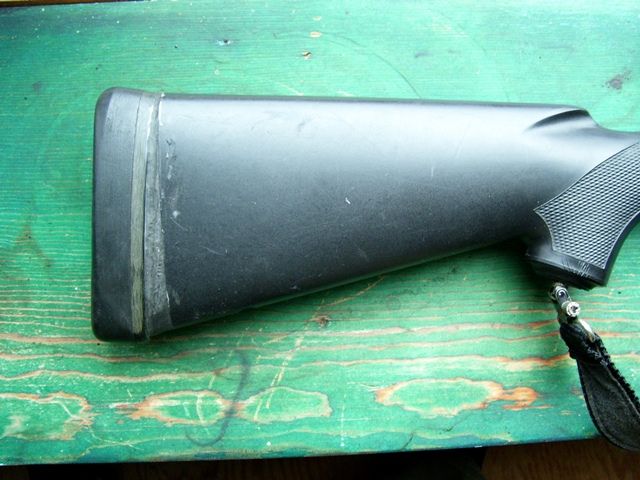|
|
Post by paul105 on Jan 11, 2013 8:56:08 GMT -5
David,
Update on the “worn out” Redhawk. Turns out that it wasn’t totally worn out. The barrel and cylinder was replaced due to extensive gas cut and erosion at the gap between the barrel and cylinder face. There were spider like radial grooves at that junction where the gas was cutting escape paths on both surfaces. Everything else on the gun was fine and after replacing the bbl/cyl, it was “as good as new”.
This was 20 years ago and memory’s fade a bit over time. Round count records were not kept but he was at the site for 5 years and would shoot a couple of hundred rounds at least two times a week when weather permitted.
The load was 21.0gr of 2400 under the common 240gr hard cast, bevel based, semiwadcutter.
FWIW,
Paul
|
|
|
|
Post by bradshaw on Jan 11, 2013 9:52:47 GMT -5
Paul.... thanks for update. Familiar with erosion pattern on "barrel mouth"----a term I use, for want of a better description. I also call it "forcing cone erosion," just because it names the rear end of the barrel. Erosion leaves a rough, bead-blasted ring, uniformly around the back edge of the forcing cone. Eventually, little rivulets from, like spokes.
However, I am not aware of noticeable erosion of the cylinder face, although i have seen a slight rounding at the edge of the chamber exit.
Heat, of course, accelerates erosion. A magnum revolver subjected to rapid-fire gets plenty hot, especially under a hot sun. We did a bit of fast shooting with high pressure experimental ammo in the Ruger Maximum; revolver got hot. I fired 750 rounds of full house .44 magnum in the Dan Wesson M44 VH8, in one day. It was ALL aimed fire. Gun got hot, but not as hot as straight rapid-fire would do. Left merest erosion trace.
David Bradshaw
|
|
|
|
Post by 2 Dogs on Jan 11, 2013 23:32:29 GMT -5
Yes, Paul, thank you for all the good information.
|
|
|
|
Post by bradshaw on Nov 21, 2023 13:36:19 GMT -5
 David Bradshaw ***** tj3006.... true, the .338 Win Mag produces recoil. Proper stocking of a centerfire rifle, which includes high velocity small bores, dramatically affects shootability. Bought this Winchester Model 70 Classic, a really fine example, in the 1990’s. Stainless steel action & barrel, a plastic stock (polymer?), which I named “Rubbermaid." Minor lapping of action; tune 3-position safety; tune trigger; substitute short & stiff trigger spring for a longer piece of 1911 firing pin spring, and pillar bed the action with Marine Tex epoxy, with floated 26" barrel. The Rubbermaid stock featured a length-of-pull for a basketball player... takes a boarding house reach to get the trigger. Factory “recoil pad” made by the same guy makes hockey pucks. Decided, while sawing the stock to shorten length-of-pull & fit a thick Kick-Eez recoil pad, to experiment with the pitch (buttplate to bore angle). Mike Larson of Federal Cartridge also hunted with a .338 Win Mag, we had conversations about bullet performance, etc., so I told Larson I’d keep him informed. Butt pad angle1) Heel rearward, toe forward (less than -90 degrees to bore axis): * Sharp recoil. * Comb jumps into face. * Slow followup shots. * Foreend uncontrollable on bench and from prone. * Long arc to shoulder (mounting). * Throws shots on target. 2) Heel vertical (90 degrees to bore axis): * Decent control. 3) Heel forward, toe rearward (+90 degrees to bore axis): * Softens recoil. * No cheek jab. * Fast followup shots. * Short arc to shoulder (mounting). * Consistent POI, tight groups. Trapr.... the .338 shot on the Kentuky Derby elk reported in Nosler Manual #3, would have been improbable in the extreme, had the rifle butt jumped up on recoil. As recoil increases, mating of stock to shooter takes real importance. David Bradshaw |
|